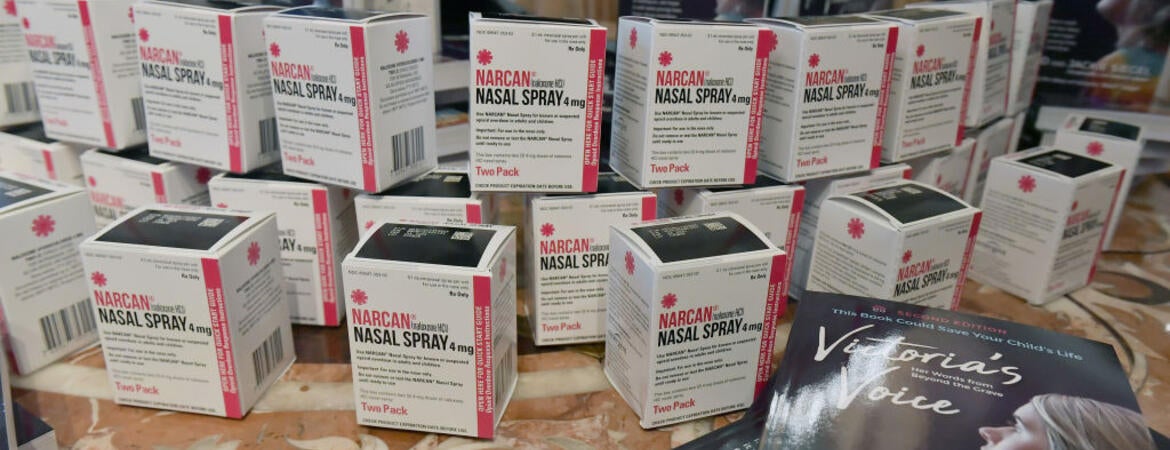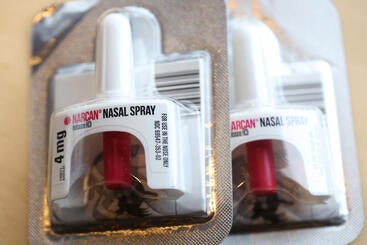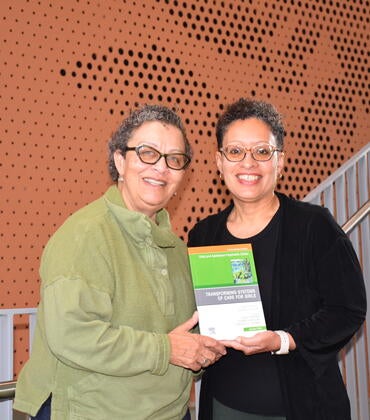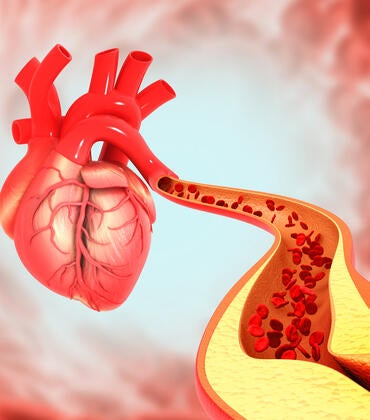
The Trump administration has proposed terminating a $56 million annual grant program that distributes naloxone, also known by the brand name Narcan, and trains emergency responders to administer the drug in the case of opioid overdoses. It's believed to have saved hundreds of thousands of lives. We asked two UCR experts on addiction about the utility of naloxone, and the potential impacts from the loss of funding. Dr. Michelle Anne Bholat is the chair of the Department of Family Medicine in the UCR School of Medicine. She is an elected official of the Beach Cities Health District, and a two-time appointee to the Medical Board of California, most recently in 2022 by Gov. Gavin Newsom. Jennifer Syvertsen is a UCR medical anthropologist who conducts drug-related research. Her current project is funded by the National Institute on Drug Abuse to study overdose prevention and harm reduction in the Inland Empire.
For context, Bholat offered the following:
Opioid overdose began to rise in the mid-1990s as the number of prescriptions with the semi-synthetic opioid, oxycodone, to treat acute and chronic pain increased. By 2010, heroin use was increasing and by 2017, drug suppliers were manufacturing high-potency synthetic opioids (HPSOs) with fentanyl as an example. Now, drug suppliers are adding HPSOs to other illicit substances including benzodiazepines, xylazine, and stimulants. In the year ending July 2024, more than 65,000 opioid overdose fatalities occurred, with almost 91% linked to fentanyl or HPSOs. In the United States, we consume 99% of all opioids produced worldwide. Opioids can create physical dependency in less than a week and withdrawal can occur in as little as eight hours after the last dose of an opioid. Opioid withdrawal, left unrecognized and untreated, can result in death.
What is Narcan and how does it work in the body?
Bholat: Narcan is a critical, life-saving drug. Narcan is the brand name for naloxone. This medication attaches to or competitively binds to a set of opioid receptors, the mu receptors found in the central nervous system. By attaching or binding to the mu receptors, Narcan blocks the effects of opiates on the brain and restores breathing. In the setting of a victim with labored breathing or respiratory arrest (not breathing but with a pulse) due to a known or suspected opioid overdose, administration of naloxone completely or partially reverses the effects of all opioids including synthetic opioids such as fentanyl. It is important to call 911 in addition to administering Narcan.
How fast does Narcan work and how long do its effects last?
Bholat: Narcan administered intranasally or intramuscularly acts fast with an onset of action in two to three minutes. This medication reverses the dangerous symptoms of opioid overdose. Narcan is short acting and has a half-life of about two hours. The effect of opioids may outlast the effect of naloxone and may require additional doses every two-three minutes. It is also important to activate the Emergency Medical System (EMS) by calling 911.
Narcan was approved in 2015 as an easy-to-administer nasal spray. Many call Narcan a “miracle drug.” Do we know how many lives it may have saved?
Syvertsen: Naloxone is an amazing drug that saved countless lives, though I'm not sure that's quantifiable because not all reversals get reported. Most reversals are actually not done by first responders; overdoses are often reversed by others in the community, including people who use drugs. That's why it's so important to saturate communities with naloxone.
Even folks who don't personally use opioids should have it on hand just in case. In my research with people who use drugs, many report reversing countless overdoses of others in the community; some call themselves the "real first responders" as they are the ones on the front lines of the overdose crisis. Many attribute the recent drop in overdoses nationally to the saturation of naloxone and other harm reduction services in communities.
Bholat: Narcan can be lifesaving if the loss of consciousness and respiratory depression is due to opioids; if the overdose is with other strong sedatives such as alcohol, benzodiazepines or xylazine, however, Narcan may partially or not at all improve opioid overdose.
Does there exist a mindset of “victim blaming” where opioid use and overdose is concerned? Are there politically motivated objections to Narcan?
Syvertsen: While some skeptics may think that naloxone - and harm reduction more generally - enable people, there is decades of research that show giving people the information and tools they need helps keep people safe. Naloxone simply enables people to breathe.
What’s the impact of this measure, if enacted?
Syvertsen: The cancellation of this funding is as misguided as basically every other health-related decision this administration has put forth, but from what I understand, this is not cutting off the funding for the states to supply naloxone by other means.
The bigger concern is the message that this cancellation sends: That the lives of people who use drugs don't matter and it's OK if they die.
Is Narcan safe to use even if it is not clear if someone is overdosing?
Bholat: Narcan does not harm if opioids are not present, so it is better to give when in doubt. Narcan 4 mg nasal spray rapidly reverses opioid overdose, and it is safe to give to individuals of all ages with known or suspected opioid overdose.
Recognizing a medical emergency and calling 911 is the first step to saving a life. To reiterate, if after shaking and shouting at a victim there is no response, call 911. If there is a known or suspected opioid overdose, administer Narcan nasal spray, check for breathing and if the victim is not breathing, then give a rescue breath followed by one rescue breath every five seconds. Administer more Narcan, if available, every two to three minutes, alternating between each nostril. Stay with the person until help arrives.
Are there any risks or side effects of using Narcan?
Bholat: Narcan could precipitate opioid withdrawal; this should not deter the use of Narcan in a victim with known or suspected opioid overdose. Early opioid withdrawal symptoms can include agitation, anxiety, local nasal irritation/sneezing, muscle aches, increased tearing, insomnia, runny nose, gastrointestinal distress including nausea, vomiting and diarrhea, sweating, and increased yawning, and these can be symptomatically managed. Added symptoms also include increased blood pressure and heart arrhythmias. Opioid withdrawal occurs in victims physically dependent on opioids who suddenly reduce or stop using opioids or victims with drugs used to treat opioid use disorder or when Narcan is used.
Withdrawal does not occur if your body is not physically dependent on opioids; however, opioid withdrawal occurs when there is physical dependency on the drug including illegal drugs such as heroin or prescribed chronic daily use of high-dose opioids.






